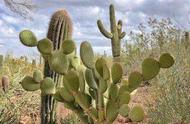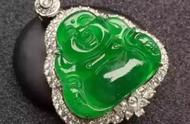李苦禅:艺术人生中的慈心与苦寒

李苦禅,字励公,乃近现代中国大写意花鸟画之巨擘,书法、美术教育皆有精湛造诣。其生平坎坷,然艺道光辉,流传千古。
Li Kuchan, courtesy name Ligong, was a prominent modern Chinese painter known for his grand freehand style in flower-and-bird painting. He was also an accomplished calligrapher and art educator. His life was fraught with hardships, yet his artistic achievements shine brightly through the ages.
民国八年,苦禅年方二十,怀抱凌云之志,独赴京师。然初至京师,举目无亲,且身无长物,暂栖于慈音寺,依舍粥棚中粥水度日。尽管寒苦交迫,其志于艺不减分毫。天假其缘,苦禅遂得入北京大学勤工俭学会,幸与徐悲鸿主持之业余画法研究会,得习素描之法。此段经历,诚其艺途之基石也。民国十一年,苦禅转入北京国立艺专。昼则穷经皓首于学堂,夜则驾人力车以求生计。即使腊月酷寒,衣仅单袍,亦不废学,劳而弥勤。此艰难岁月,炼其坚韧,终成其艺术之大成。
In 1919, at the age of twenty, Li Kuchan set out for Beijing with lofty ambitions. Upon arrival, he found himself alone and penniless, temporarily residing in Ciyin Temple and surviving on charity porridge. Despite the harsh conditions, his dedication to art never wavered. Fortune smiled upon him when he was accepted into the Beijing University Work-Study Program, where he studied under the guidance of Xu Beihong in the amateur painting study group, learning the art of sketching. This period laid a solid foundation for his artistic career. In 1922, Li transferred to the National School of Fine Arts in Beijing. By day, he studied diligently, and by night, he pulled a rickshaw to earn a living. Even in the bitter cold of winter, wearing only a thin robe, he persevered in his studies and work. These difficult years forged his resilience and ultimately led to his great artistic achievements.

李苦禅之艺途,坎坷而执着。有一日,往八达岭写生,所携干粮已尽,身无分文,唯能乞食以饱。归京途中,饥困倒于路旁,幸遇一善心车夫,将其扶上马车,载回京师。为求生存与学业,苦禅效法宋范仲淹,每日煮杂面粥半锅,凉后以筷划作三块,每餐食一块。在国立艺专炭画课,每生发一馒头,用以粘补画误之炭画。苦禅谨慎作画,绝不让一线出错,馒头则留以果腹。后虽为教授,依旧清贫自持,常资助贫困之人,生活清苦如昔。
Li Kuchan's artistic journey was marked by perseverance and dedication. On one occasion, while sketching at Badaling, he ran out of food and money, resorting to begging for sustenance. On his way back to Beijing, he collapsed from hunger by the roadside, only to be rescued by a kind-hearted cart driver who took him back to the city. To survive and continue his education, Li followed the example of Song dynasty scholar Fan Zhongyan, cooking half a pot of mixed-grain porridge each day, dividing it into three parts, and eating one portion per meal. During charcoal drawing classes at the National School of Fine Arts, each student received a bun to use for erasing mistakes. Li, however, was so meticulous in his drawing that he saved the bun to eat. Even after becoming a professor, he lived a frugal life, often helping the poor and maintaining his simple lifestyle.
李苦禅之艺,承中华丹青之道,博采石涛、八大山人、扬州画派、吴昌硕、齐白石诸贤之技,融汇中西,通古法而开新径,独创于花鸟大写意。其笔墨厚重而豪放,气势磅礴,形象简练而鲜明,树大写意花鸟之新范。其艺融古今之精华,具独辟蹊径之风骨,显非凡之造诣,耀丹青之堂。
Li Kuchan's artistry inherited the traditions of Chinese painting, drawing extensively from masters like Shitao, Bada Shanren, the Yangzhou School, Wu Changshuo, and Qi Baishi, while also incorporating Western techniques. He integrated ancient methods and created a unique style in freehand flower-and-bird painting. His works are characterized by bold and vigorous brushwork, an imposing aura, and clear, concise forms, setting a new standard for freehand flower-and-bird painting. His art combines the essence of ancient and modern techniques, demonstrating an innovative spirit and exceptional skill that illuminate the world of painting.
李苦禅先生之花鸟天地,浑厚平实,妙得天趣。常以松、竹、梅、兰、菊、石、荷、八哥、鸬鹚及雄鹰为题,运笔写生。其审美独具,技法富赡,创诸多形神兼备、千姿百态之艺术形象。其笔下花鸟,虽具写实之质,非纯摹自然,实为凝练再造。其画作随意中见朴拙,含蓄中显阳刚,运笔如行云流水,苍劲朴拙,意趣盎然。笔墨纵逸豪放,雄健磅礴,驭墨挥毫之能,惊世骇俗。其画幅愈广,挥洒愈自如。晚年作品,益返朴归真,雄健苍劲,笔精墨妙,臻于“笔简意繁”之绝境。
In the realm of flower-and-bird painting, Li Kuchan created a world that is robust, plain, and filled with natural charm. He often used subjects such as pine, bamboo, plum blossoms, orchids, chrysanthemums, rocks, lotus flowers, mynahs, cormorants, and eagles. His unique aesthetic vision and diverse techniques produced many vivid and varied artistic images. His depictions of flowers and birds, while somewhat realistic, were not mere objective portrayals of nature but rather highly refined creations. In his seemingly casual brushstrokes, there is a rustic charm, and in their natural subtlety, there is a masculine strength. His brushwork flows like clouds and water, vigorous and simple, rich in interest. His use of ink is bold and expansive, his brushstrokes powerful and majestic. His ability to control the brush and his skill in freehand techniques are astonishing. For him, the larger the canvas, the more freely he could express himself. Especially in his later years, his works increasingly returned to simplicity, becoming more robust and vigorous, with his brush and ink achieving a state of "simplicity in form, richness in meaning."















李苦禅于艺道造型,师法自然,妙造意象。其鹰之绘,融鹫雕之形,乃精心锤炼勇猛矫健之象。笔墨之法,尤重用笔,以笔为筋骨,倡书法入画,笔笔写出,曾有“书至画为高度,画至书为极则”之言。其作多以水墨为主,间施重彩写意,凝厚之墨与金碧之色相映成趣,别具一格。章法之妙,善造势,巧理结构之矛盾,以增画面之张力,臻于妙境。
In artistic modeling, Li Kuchan adhered to the principle of learning from nature, focusing on the creation of images. His paintings of eagles, combining the features of vultures and hawks, are carefully crafted symbols of bravery and strength. In brush and ink techniques, he emphasized the importance of the brush, using it as the backbone, advocating for the integration of calligraphy into painting, with each stroke carefully executed. He once said, "Calligraphy reaches its height in painting, and painting reaches its ultimate in calligraphy." His works are mainly in ink and wash, with occasional use of heavy colors in freehand style, where the dense ink and golden colors create a unique contrast. In composition, he was skilled at creating momentum and resolving structural contradictions, enhancing the tension of the painting.
间艺”于一炉。书法与画艺之结合,实为变革之枢纽。苦禅常云:“不谙书法,不习书法,未能窥大写意与写意美学之堂奥”。故于中国书法之“画家字”道中,卓然自立。数十载觅碑访帖,自成朴雅浑穆、风神婉转之行草妙境。
Li Kuchan's calligraphy and painting were interrelated, embodying the concept that Chinese freehand painting is "written." This integrates the "beauty of results" and the "beauty of means," as well as "spatial art" and "temporal art." The combination of calligraphy and painting is the key to this transformation. Li Kuchan often said, "Without understanding calligraphy, without practicing calligraphy, one cannot understand the grandeur of freehand painting and its aesthetics." Thus, he established a distinctive style in the realm of Chinese calligraphy known as the "painter's script." Through decades of seeking out and studying inscriptions and calligraphic models, he developed a personal style of cursive script that is both simple and elegant, vigorous and fluid.
李苦禅于艺道之探求,不止于技法之精进,更在心法之升华。书画相映,融会贯通,独辟蹊径,自成一家。其艺道之深邃,非朝夕之功,乃数十载心血所凝。所成之境,朴雅浑穆,风神婉转,笔简意繁,妙趣无穷。后之来者,若能承其遗绪,必可窥中华艺道之真谛,弘国粹,振艺林,光昭千载。
In his pursuit of art, Li Kuchan's focus was not merely on technical refinement but also on the elevation of his inner spirit. His calligraphy and painting were mutually illuminating, blending and penetrating each other, creating a unique path and forming a distinctive school. The depth of his artistic realm was not achieved overnight but was the culmination of decades of dedicated effort. His works, characterized by simplicity and elegance, vigor and fluidity, and rich in meaning, are endlessly fascinating. Future generations, if they can inherit his legacy, will surely grasp the true essence of Chinese art, promote national cultural heritage, and bring glory to the art world for millennia.




















 鲁公网安备37020202370233号
鲁公网安备37020202370233号